Business Model For Medical Care 2020. The Ideal Future State
Stanley Feld M.D.,FACP,MACE
Please click on all the links to study
the references to each spoke. It will help you visualize the power of the business
model.
The ideal future state business
model for the healthcare system must include the execution of ideas in the specific spokes outlined below.. These spokes
will serve to align all of the stakeholders’ interests.
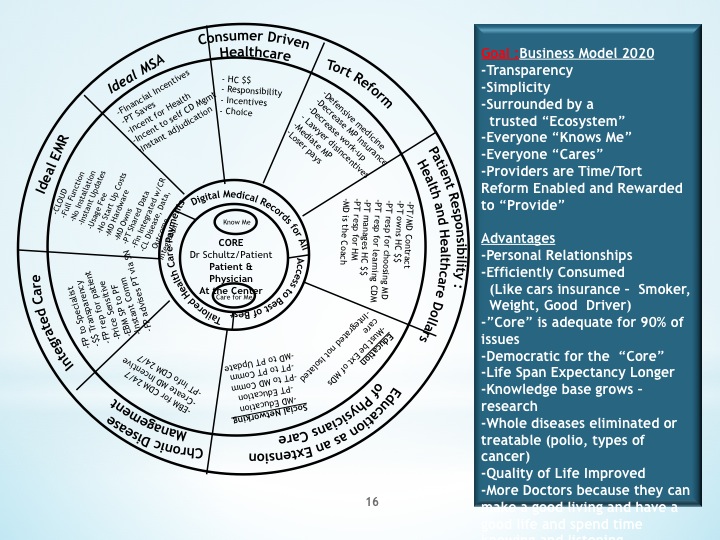
The business model must
contain appropriate rules for a consumer driven healthcare system, an ideal
electronic medial record, and an ideal medical savings account.
The ideal medical saving
accounts can work optimally when there is significant tort reform and patients
take full responsibility for their health and healthcare dollars.
Consumer education is critical to the business
model of the future. Educational modules can be available to consumers 24/7 via
the Internet. These educational modules must be an extension of consumers
physicians’ care in order to be effective. The education can become available
using a series of social networks.
Chronic disease self-management education can
be achieved by the use of interactive online teaching programs. Patients can be
linked to share their disease experience through private social networks.
Most believe that the healthcare system must
have greater integration of care. This integration of care can be done
virtually through a series of private integrated networks.
Effective integration can be achieved without
disruption of the entire healthcare system. Obamacare has been disruptive to
the entire healthcare system.
Obamacare is forced integration by the
government will be slow, costly and unsuccessful.
Physicians must be compensated for the presently
uncompensated time necessary to execute each one of the spokes of the wheel.
Each spoke is necessary to convert the
healthcare system into a system that once more makes the physician patient
relationship paramount.
The future business plan removes control of the
healthcare system from the government. It permits the patient to have the freedom
to choose his own healthcare course.
Tort reform is vital to the 2020 business model.
It will decrease costly over-testing to avoid frivolous malpractice suits.
There are many ways to set up a tort reform system that truly protects patients
from real harm while eliminating over-testing. It limits the malpractice
litigation system. Punitive damages must be lowered. Losers in lawsuits must
pay all fees. These two provisions will decrease lawyers’ incentive to sue.
Consumer driven healthcare will create a system
that promotes personal responsibility by the consumers’ for their health and
health care dollars.
The major spoke necessary to successfully
accomplish a consumer driven healthcare system is my ideal medical saving
accounts.
The ideal medical savings accounts would
provide the financial incentive for consumers to drive the healthcare system.
It would dis-intermediate the healthcare insurance industry’s grasp on first
dollar coverage and profits. The insurance industry would realize that its
profit margin would increase under this system.
In order for consumers to be in a position to
lower the cost of healthcare they must be taught to understand how to self
manage their disease and be responsible for the decisions they make in their
choices for medical care.
In order to decrease patients’ dependency on
the government and increase being
responsible for themselves, a system of education using information technology
as an extension of their physicians’ care has to be developed and put into
place.
All the social networking must be an extension of
the physicians’ medical care to their patients. Social networking must be
developed to enhance and promote the physician/patient relationship because
this relationship is critical, at its core, to successful medical treatment.
Social networking and information technology
can extend physician educational resources for patient care.
Systems of care for the self-management of chronic
disease as an extension of their physicians care have already been developed.
The unsuccessful chronic disease self-management systems are the programs that
are not an extension of physicians’ care. The reason these third party systems
are unsuccessful is because they undermine the patient physician relationship.
President Obama has done pilot studies using
those third party self-management companies to prove that chronic disease
self-management systems work. They have all failed to reduce the cost of care.
Therefore the administration has reached the
conclusions that self-management of chronic disease does not work. Nothing
could be further from the truth. The government simply does not understand the
magic of the physician-patient relationship.
In order to decrease the cost of medical care,
medical care must be integrated. At present, primary care physicians recommend
specialists. The primary care physicians know whether the specialists are doing
a good job by the specialists’ treatment results with their patients.
Most of the time physicians do not know their
specialists’ fees. These fees must be totally transparent to primary care
physicians and their patients. The primary care physicians can then be in a
position to help their patients choose appropriate specialists.
It will also reduce the specialists’ prices
because they will be forced to become competitive by the patients in a consumer
driven system.
Hospital fees must also be transparent. One of
the reasons I am opposed to hospital systems hiring physicians and paying them
a salary is the hospital systems would then be able to develop a monopoly in a
town or area of town. This would permit the hospital system to raise prices
without informing patients or physicians.
Hospital systems could erase physicians’ choices
and hindered patients from having the freedom to choose a hospital or
specialist of their choice with their primary care physicians. It devalues the
patient physician relationship.
The way President Obama is going about
developing a universally functioning electronic medical record is foolish and
costly. Most physicians cannot afford a fully functional electronic medical
record. This fact is being used to drive physicians into being employees of
hospital systems. The problem is hospital systems are paying hundreds of
millions of dollars for electronic medical records that are not fully
functional.
Many of these records are hard to use and
provide inflexible data. The inflexible data leads to healthcare policy
decisions that are wrong. The data is also used to commoditize medical care.
Commoditized medical care is not the best quality
of medical care.
If the government is so smart it should develop
a fully functional electronic medical record and provide it to all hospital
systems and practices for free.
The EMR should be put in the cloud. Providers
should be charged by the click. The government can service and upgrade the EMR
in one place and improve the quality of data collected. The data should be used
for educational purposes only and be owned by the patients and physicians. It
should not be used for punitive purposes. The inaccurate data is now used for
punitive purposes. The result has been a lack of physician cooperation.
The healthcare journey to an ideal future state
must begin in an orderly way. The principle goal is to be consumer centric. It
must be consumer driven and force the secondary stakeholders to be transparent
and competitive.
This journey will wring the excess costs out of the healthcare
system. It will create a democratic system affordable to all.
The opinions expressed in the blog “Repairing The Healthcare System” are, mine and mine alone
Please have a friend subscribe
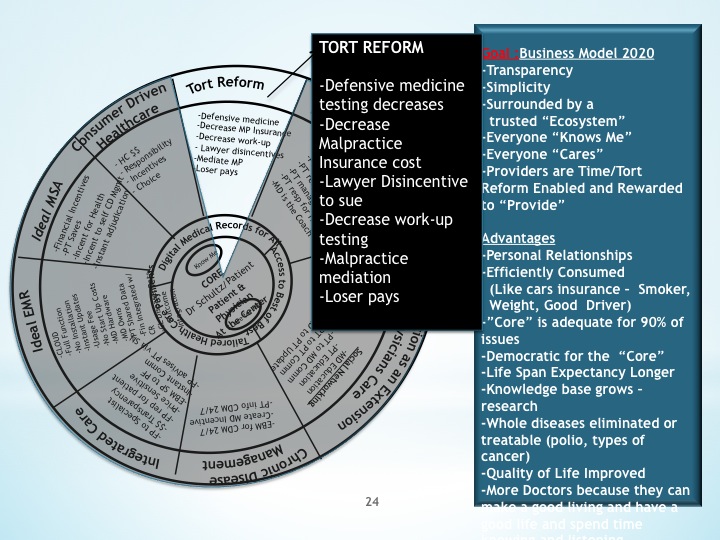
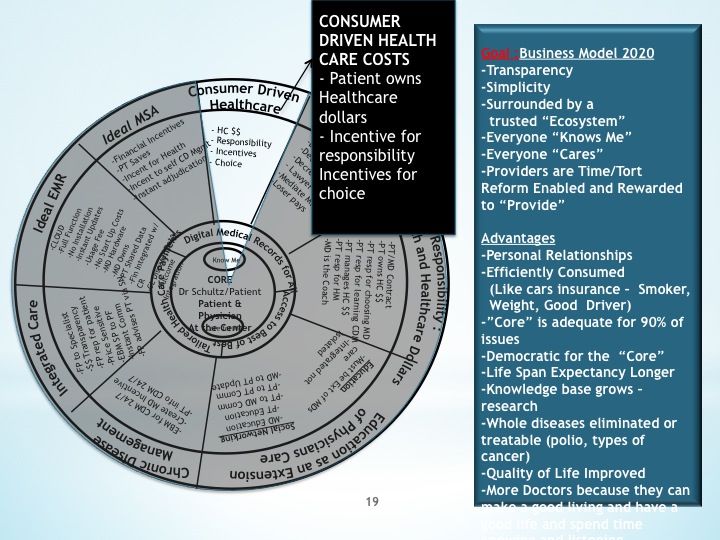
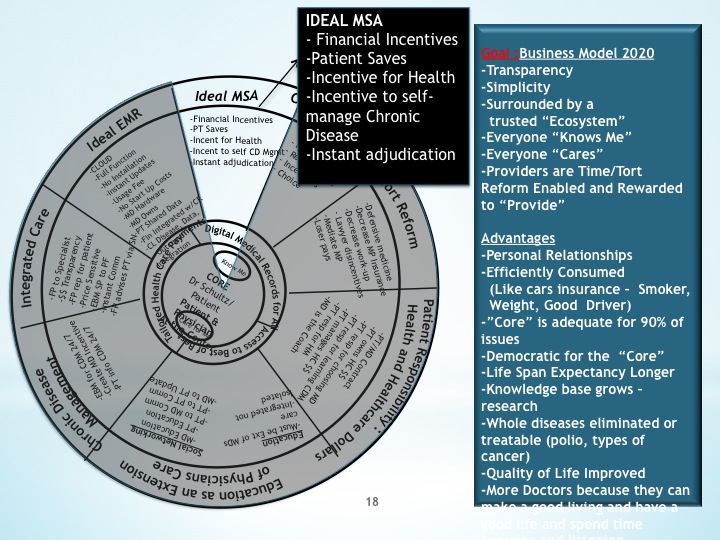
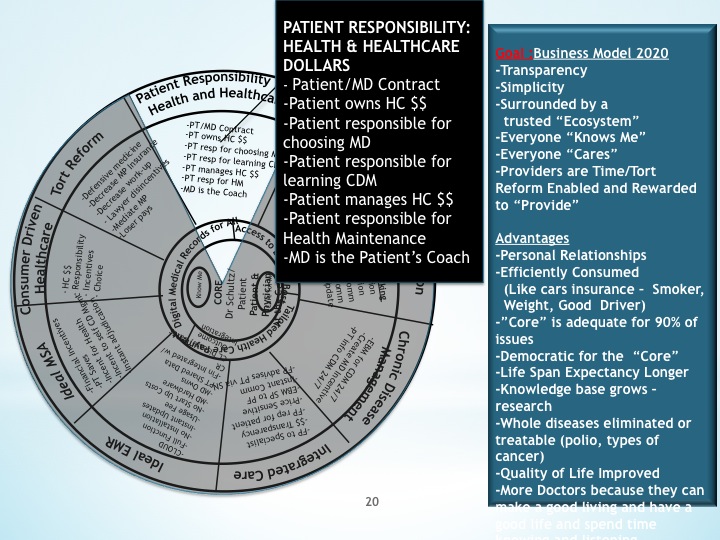
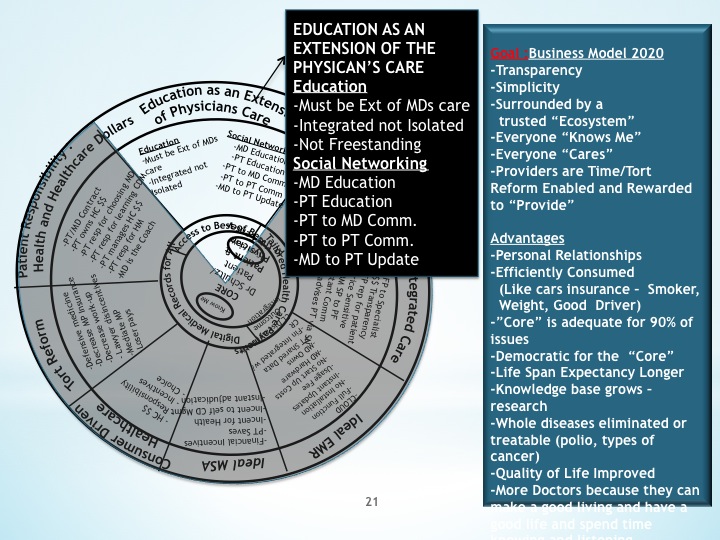
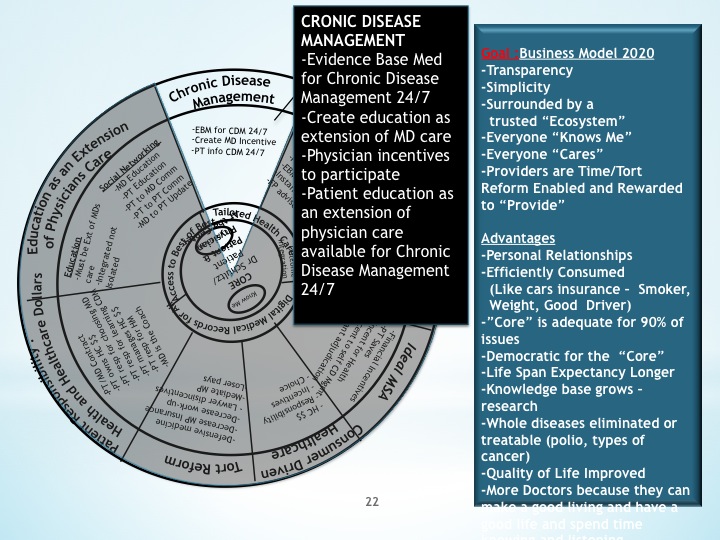
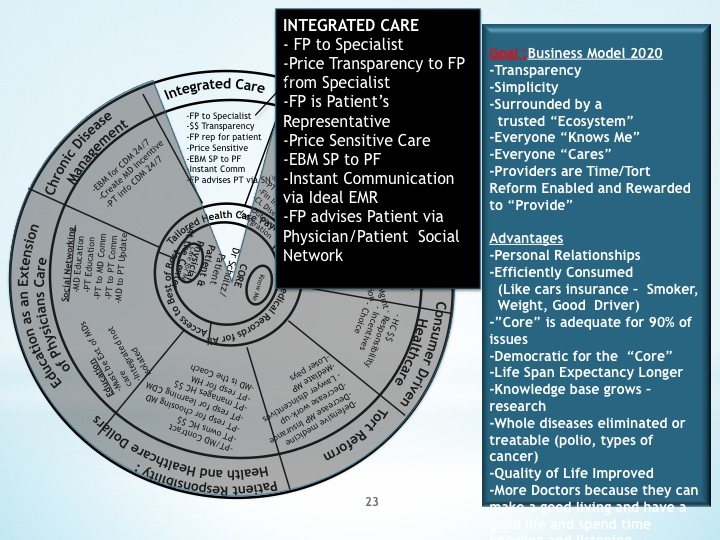
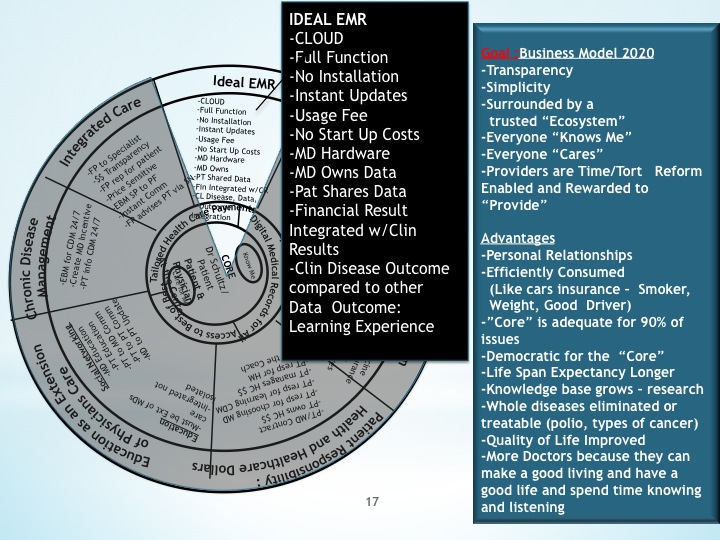
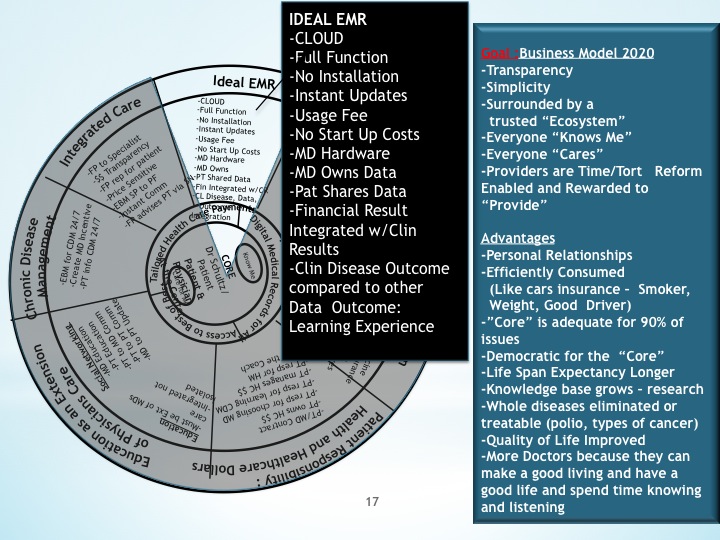
recaptcha solver • October 7, 2013
Hello, this weekend is nice for me, since this time i am reading this fantastic informative article here at my home.
Dear President-elect Trump Part 3 | Stanley Feld M.D., FACP, MACE